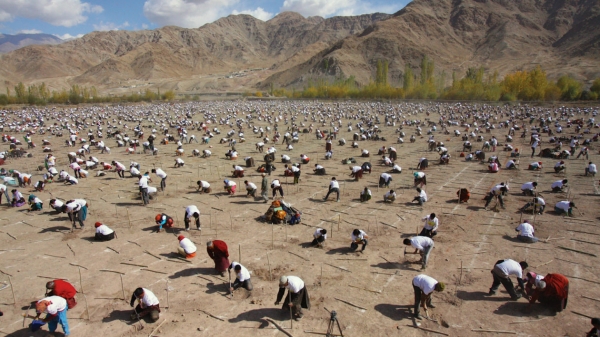It was perhaps the most spectacular failed tree planting project ever. Certainly the fastest. On March 8, 2012, teams of village volunteers in Camarines Sur province on the Filipino island of Luzon sunk over a million mangrove seedlings into coastal mud in just an hour of frenzied activity. The governor declared it a resounding success for his continuing efforts to green the province. At a hasty ceremony on dry land, an official adjudicator from Guinness World Records declared that nobody had ever planted so many trees in such a short time and handed the governor a certificate proclaiming the world record. Plenty of headlines followed.
But look today at the coastline where most of the trees were planted. There is no sign of the mangroves that, after a decade of growth, should be close to maturity. An on-the-ground study published in 2020 by British mangrove restoration researcher Dominic Wodehouse, then of Bangor University in Wales, found that fewer than 2 percent of them had survived. The other 98 percent had died or were washed away.
“I walked, boated, and swam through this entire site. The survivors only managed to cling on because they were sheltered behind a sandbank at the mouth of a river. Everything else disappeared,” one mangrove rehabilitation expert wrote in a letter to the Guinness inspectors this year, which he shared with Yale Environment 360 on the condition of anonymity. The outcome was “entirely predictable,” he wrote. The muddy planting sites were washed by storms and waves and were otherwise “ecologically unsuited to mangrove establishment, because they are too waterlogged and there is no oxygen for them to breathe.”
Read more at: Yale Environment 360
More than 9,000 people in Leh, India planted more than 50,000 tree saplings in under an hour on October 10, 2010. (Photo Credit: Drukpa Publications via Wikipedia)


